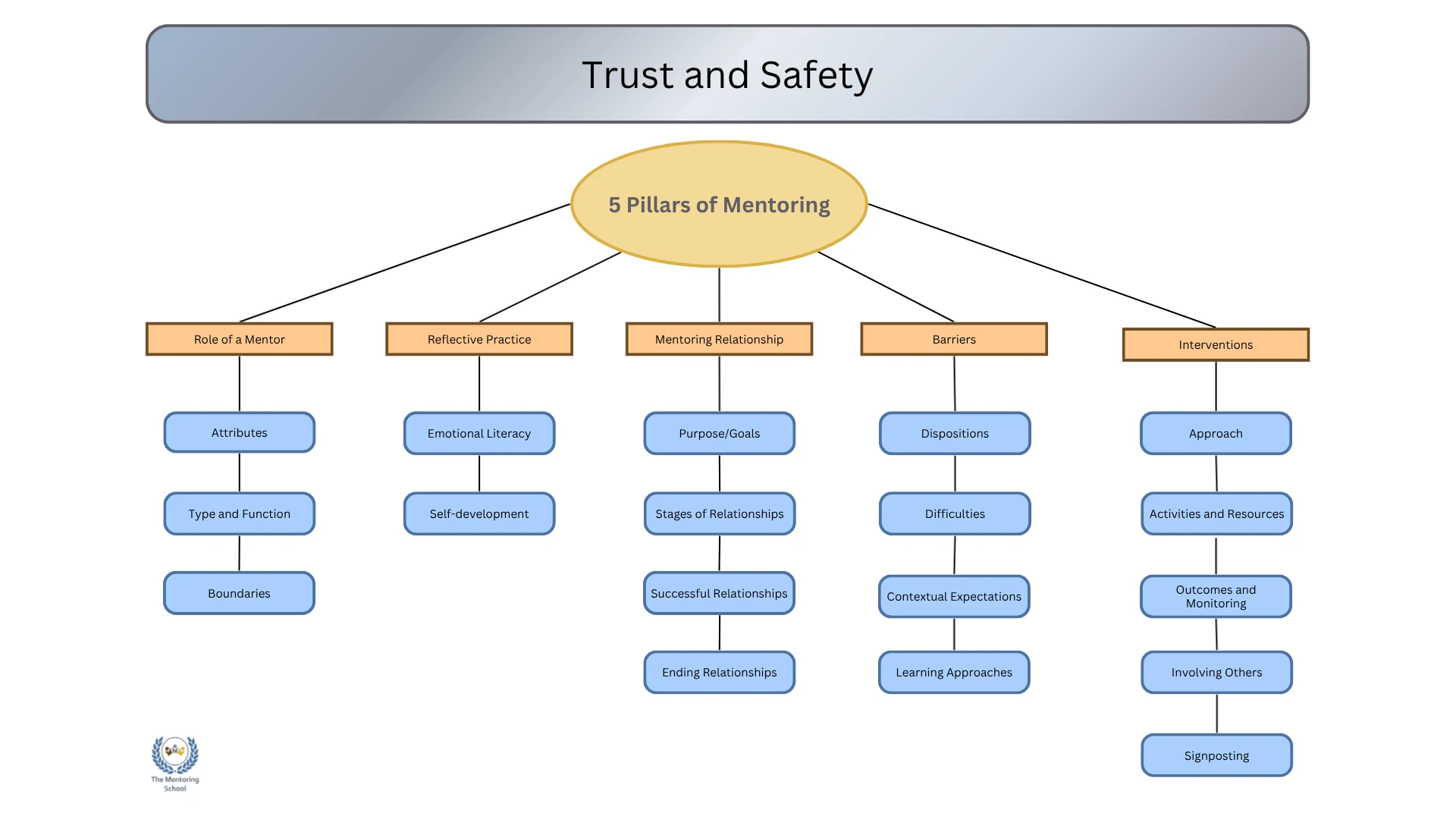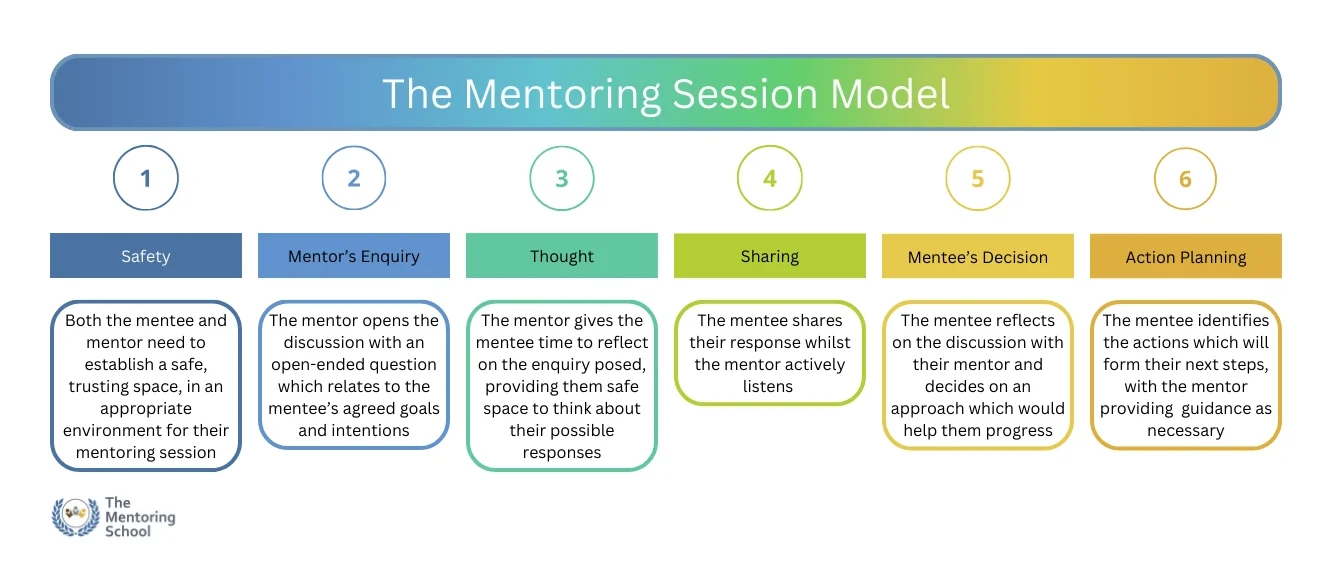What Is Mentoring?
A look at the underlying principles
Definition and Details
According to the Cambridge Dictionary, mentoring is “the act or process of helping and giving advice to a younger or less experienced person, especially in a job or at school.“
But what does that look like in the real world? Mentorship can take an almost limitless number of forms, influenced by the people involved, the identified goals, and the wider context of how the relationship formed. Despite this, there are some aspects which all of these scenarios have in common, and which need to be kept in mind in order for sessions to be genuinely effective.

At The Mentoring School we base all of our training on the fundamental concepts which underpin effective practice, and as such developed a series of tools and models to explain these frameworks.
Whether you are considering becoming a mentor or just want to learn more about the topic, take a look at these resources to get to grips with what mentoring means. For anyone wanting to get started on their training journey, check out our Free Basics of Mentoring mini-courses.
Theory and Practice
Mentoring is much more than simply sitting down with someone to have a hopefully helpful conversation. It is a careful balance of providing advice and guidance whilst also encouraging and enabling your mentee to explore their own capabilities.
As you gain more experience and explore deeper throughout your mentoring journey, you will soon realise that there is a wide range of research and theory which underpins all forms of mentoring. In this section, we share some of the concepts and models which our courses regularly draw upon.
The 5 Pillars of Mentoring
This model breaks down the overarching idea of mentoring into 5 pillars with associated subcategories. Within a context of established trust and safety, they support best practice principles for effective practice. Each pillar is a key aspect of mentoring which the mentor needs to be comfortable with in order to have a holistic understanding of their role.
From a basic introduction at entry level, to an in depth understanding of the theory and literature which underpins each pillar in advanced courses, our training regularly refers to this structure for continuity of concept. It is also useful to refer to when mentors want to assess and improve their practice as part of their ongoing learning and development.

The Mentoring Flowchart
At each stage of the relationship there are choices to be made by both mentee and mentor which will shape the way that their mentorship unfolds. Throughout the time that you conduct sessions, it is definitely worth periodically taking stock of the progress being made and considering where there may be room for improvement.
From the very beginning with selecting a specific type of mentoring, to continuously monitoring progress to inform next steps, assessing the impact of contextual changes as they occur, and responding to a mentee’s challenges, informed decision-making is at the heart of mentors’ responsibilities.
The Mentoring Flowchart was created to serve as a guideline for mentors to help them reflect on what direction and support would be most suitable for their mentee’s situation. It is designed to help them consider options in the longer-term context of the mentorship’s ultimate goals.
With each level of training completed comes deeper understanding of the influences of experience, theory, wider literature and how they affect the suitability of options.

The Mentoring Session Model
As we said before, whilst the context of mentorships is almost limitless, there are some aspects which are shared across all practice. One of these is the fact that the fundamental structure of session conversations is in fact fairly consistent. Or at the very least, conversations need to flow through a series of stages in order to make sure that the points being discussed can be fully explored and lead to a constructive outcome.
The Mentoring Model was developed from extensive experience, research and consultation to provide a framework for the stages of conversation to deliver the effective sessions. Following this outline has proved highly effective in supporting mentors to provide meaningful support. In particular is is able to act as a structure for reference during the planning stages, helping mentors to feel confident in their contributions.

To learn more about becoming a mentor be sure to check out our Getting Started in Mentoring page, or feel free to get in touch with any questions and we will be happy to help.
